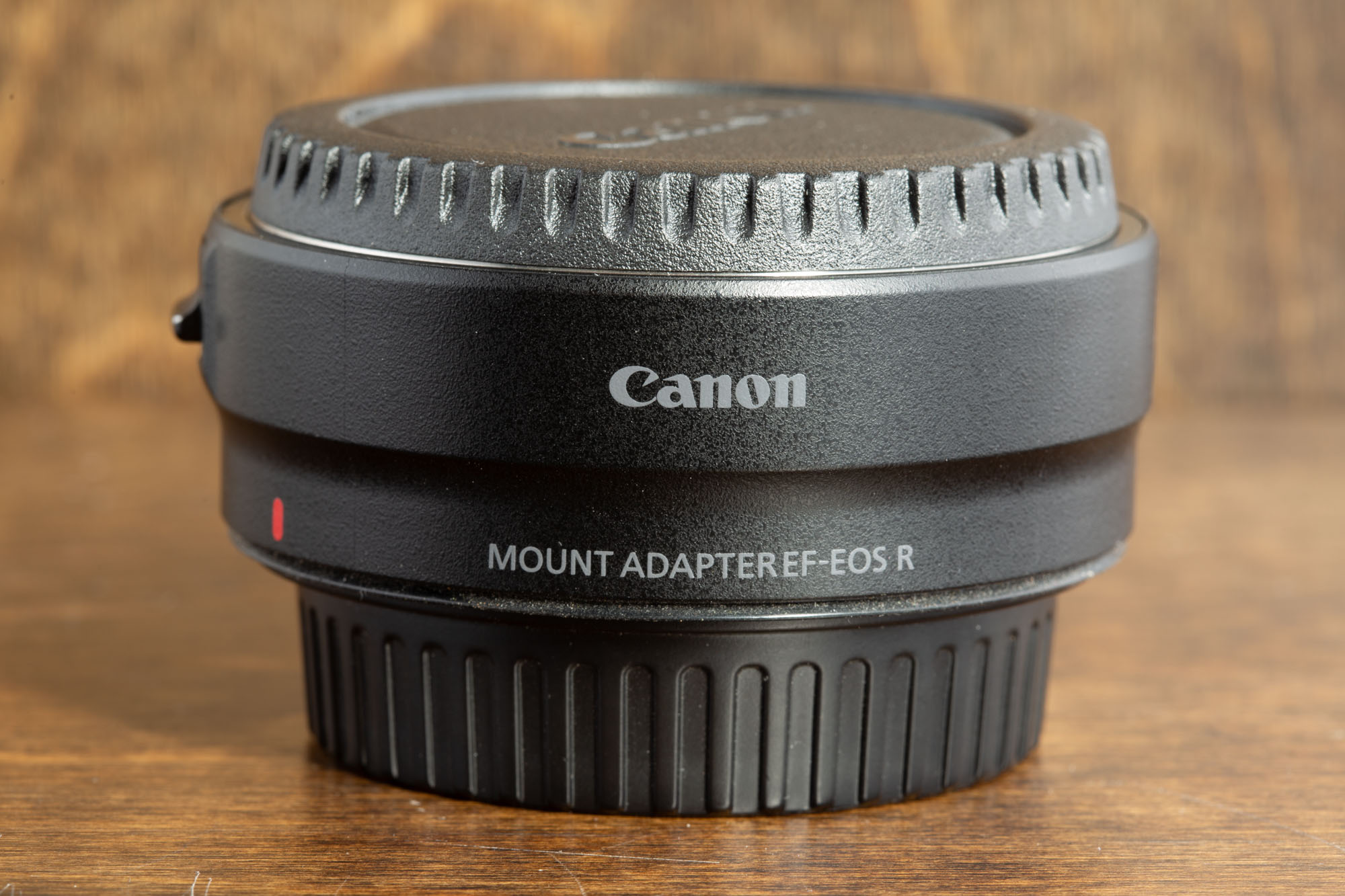Transitioning from DSLR to mirrorless raises numerous questions, especially regarding the performance of the Canon EF to RF adapter autofocus when integrating existing lenses with new technology. This change, while daunting, actually enhances the capabilities of your current lenses, making an immediate switch to new RF lenses unnecessary.
Canon’s EF to RF adapters are remarkable, facilitating a seamless and effective connection that often improves autofocus performance, particularly when paired with the advanced autofocus systems of mirrorless models. My journey of adapting EF lenses to my Canon R5 has been eye-opening, with the enhanced autofocus standing out among the numerous benefits.
This article addresses frequent queries about using Canon EF lenses with RF mirrorless cameras, delves into various adapter options, and shares personal insights on the transition from DSLR to mirrorless camera systems.
This post may contain affiliate links, meaning I get a commission if you decide to make a purchase through my links at no cost to you. Please read my disclosure for more info.
Can you use Canon EF lens on Rf Cameras?
Navigating the transition to Canon’s latest mirrorless camera bodies might raise the question, can you use Canon EF lenses on RF cameras?” Well, the transition is smoother than you might think! The standard Mount Adapter EF-EOS R bridges the gap between your cherished EF-S and EF lenses and the innovative EOS R system. It lets you integrate these lenses seamlessly with Canon’s new mirrorless bodies, preserving the value of your existing lens collection.
From personal experience, the leap to mirrorless brought unexpected perks. When I coupled my EF lenses with my Canon R5, the autofocus performance was a revelation! It outshone what I’d known with my Canon 5D MKIII, all thanks to the R5’s advanced AF system. The results were not just on par—they were noticeably better.

However, there’s a caveat to remember. While adapting older EF lenses to new RF mount cameras is a breeze, the reverse isn’t feasible. Therefore if you’re using your old DSLR as a backup camera body, you can’t fit the cutting-edge RF lenses on older EF mount DSLRs. It’s a one-way transition, but considering the enhanced performance and the ability to retain the use of your favorite EF lenses, it’s definitely worthwhile to adapt your old lenses.
Do EF-RF Lens Adapters Affect Autofocus?
When I first entertained the idea of adapting my EF lenses to the Canon R5, I had one overriding question: How does the Canon EF to RF adapter autofocus perform? My apprehensions were swiftly put to rest. The autofocus didn’t just maintain its reliability; it became noticeably faster and more accurate on my R5. My EF lenses were more than merely compatible; they excelled beyond their performance on any of my former DSLR camera bodies.
Yet, there’s more to the story. If you’re using an RF mount camera, the native RF lenses take performance a step further. This leap is due to the RF mount’s 12-pin connection, a significant upgrade from the EF mount’s 8-pin. The additional pins facilitate quicker communication between camera and lens, resulting in even faster autofocus speeds.

So, while EF lenses see greatly improved performance when adapted to RF mount cameras, utilizing RF lenses opens up a realm of speed and precision previously unattainable. This revelation not only eased my transition to the mirrorless system but also invigorated my photography journey with renewed possibilities.
Does the Canon EF to RF Adapter Reduce Quality?
Transitioning from a Canon DSLR to a mirrorless system often brings up another critical question: Does the Canon EF to RF adapter reduce quality? From my experience, the simple answer is no. The standard EF to RF adapter and its variant with the control ring are designed with no additional elements inside. Essentially, it’s just an empty space between the lens and the camera. This means that the light passes through unhindered, preserving the optical quality of your beloved EF lenses.
However, there’s a slight nuance when using the EF to RF adapter with drop-in ND filters. These handy filters, while offering creative control over exposure, introduce an extra element into the light’s path. Depending on the filter’s quality, you might observe minor aberrations, a common trade-off when using additional elements with your lenses.

So, rest easy knowing that the Canon adapters are crafted to maintain the integrity of your images. Whether you’re shooting landscapes, portraits, or anything in between, your transition to the RF system can be a seamless blend of the old and new, without compromising on image quality.
Canon EF-EOS R Adapters
Canon’s leap into the mirrorless scene has brought with it a nifty solution for those who’ve collected Canon EF glass over the years: the Canon EF to RF adapter. These adapters are lifesavers for those of us transitioning to the mirrorless system without wanting to abandon our collection of EF lenses.
The most basic, and budget-friendly, is the standard Canon EF to RF Adapter. It’s a no-frills option that does its job perfectly, maintaining the original quality of your lenses. I’ve found it works like a charm, providing a seamless link between my camera and lenses.

Stepping up, the Canon EF to RF Adapter with Control Ring is nice if you want a control ring like the new RF lenses offer. It replicates the programmable control ring feature found on RF lenses, letting you adjust settings like aperture or ISO right from the lens. Personally I find the controls on my R5 sufficient for quick adjustments, but people adapting to camera bodies without dedicated controls for shutter speed, iso and aperture might find this feature extremely helpful.
Lastly, there’s the Canon EF to RF Adapter with Drop-In Filter, a favorite among ND filter aficionados. It allows the use of a single set of ND filters across all your lenses, which is a fantastic cost saver and more convenient. The only downside to this adapter is the mandatory clear filter when you’re not looking to use the ND option, introducing an extra element that could affect image clarity.
Check Price: Canon EF-EOS R Adapters
3rd Party Canon EF-EOS R Adapters
Venturing beyond Canon’s official gear, many photographers, myself included, have explored third-party options for EF to RF adapters. Among these, Vello and Commlite are prominent names, but all 3rd party adapters come with their quirks.
Vello’s adapter caught my attention with its good autofocus performance and clarity. However, like most aftermarket adapters, it lacks the internal bellows found in Canon’s adapter, leading to halo effects when shooting in bright conditions. It’s a noticeable drawback for those of us keen on preserving the original quality of our EF lenses.

On the other hand, Commlite offers a tempting balance between cost and performance. Its autofocus and clarity are also great. But the build quality doesn’t quite match up to Canon’s adapter. Despite these drawbacks, aftermarket adapters usually work well enough to be an attractive choice for budget-conscious photographers or hobbyists.
Check Price: 3rd Party EF to RF Adapters
Pros and Cons of EF to RF Adapter
Using an EF to RF adapter can significantly broaden the capabilities of your Canon mirrorless camera, allowing it to work with a variety of lenses originally designed for Canon’s DSLR systems. However, adapting the old lenses to new camera bodies isn’t without it’s tradeoffs. Here are the pros and cons of using an EF to RF adapter on your Canon mirrorless body:

Pros:
- Expanded Lens Compatibility: The most significant advantage is the ability to use your existing collection of EF lenses with a new RF-mount camera system. This is particularly beneficial if you’ve already invested in high-quality EF lenses.
- Cost Savings: Instead of buying new RF lenses, which can be expensive, you can continue to use your EF lenses, saving money in the short term.
- Improved Autofocus: Good quality adapters will improve both the speed and accuracy of your old EF lenses by taking advantage of the new mirrorless camera’s autofocus system.
- Additional Features: Some adapters, like the Canon Control Ring Mount Adapter, add functionality, which is present on native RF lenses but not on EF lenses.
- Preservation of Image Quality: High-quality adapters do not introduce additional glass elements between the lens and the sensor, thus maintaining the original image quality of the lens.
Cons:
- Potential for Reduced Performance: When compared to native RF lenses on mirrorless bodies, adapted EF glass will not perform as well.
- Extra Bulk and Weight: Using an adapter adds extra length and weight to your camera setup, which can make it slightly more cumbersome.
- Compatibility Issues: Not all EF lenses may be fully compatible with all functions of RF-mount cameras when using an adapter, potentially limiting certain features.
- Cost of Good Adapters: While cheaper than buying new lenses, high-quality adapters can still be a significant investment, and opting for less expensive, lower-quality adapters may introduce issues like poor fit or build quality.
- Potential for Flare: Some users have reported increased lens flare when using certain 3rd party adapters, due to less effective designs of the internal chamber.
When I transitioned to a mirrorless system, the Canon EF to RF adapter autofocus became invaluable. While I loved my collection of EF lenses, I was initially concerned about compatibility with the new camera. To my delight, not only did they fit perfectly, but they also seemed to perform better than on my older DSLRs. Sure, there might be a few trade-offs when not using native RF lenses, but the ability to use my trusted EF lenses without sacrificing quality or performance was a huge win.






You neglected to mention that when using EF-S lenses on an R5 you only get 17.5 megapixels not 45. EF remains 45 megapixels
A good point worth mentioning! Yes, the image projected by an EF-S lens is designed for an APS-C sensor size, meaning it won’t cover the entire area of a full-frame sensor. This will result in reduced resolution when you adapt them to a full frame body as you describe.